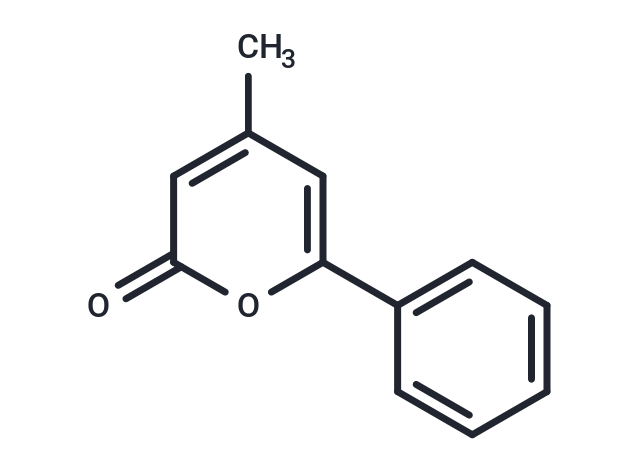Shopping Cart
- Remove All
 Your shopping cart is currently empty
Your shopping cart is currently empty

4-methyl-6-phenyl-2H-pyranone is derived from Scutellaria baicalensis Georgi and improves mitochondrial functionality to protect astrocytes against hydrogen peroxide-induced toxicity.

| Pack Size | Price | Availability | Quantity |
|---|---|---|---|
| 5 mg | $50 | In Stock | |
| 10 mg | $70 | In Stock | |
| 25 mg | Inquiry | In Stock | |
| 50 mg | Inquiry | In Stock | |
| 1 mL x 10 mM (in DMSO) | $52 | In Stock |
| Description | 4-methyl-6-phenyl-2H-pyranone is derived from Scutellaria baicalensis Georgi and improves mitochondrial functionality to protect astrocytes against hydrogen peroxide-induced toxicity. |
| Alias | 4-methyl-6-phenyl-2H-pyranone |
| Molecular Weight | 186.21 |
| Formula | C12H10O2 |
| Cas No. | 4467-30-5 |
| Smiles | CC=1C=C(OC(=O)C1)C2=CC=CC=C2 |
| Relative Density. | 1.31g/cm3 |
| Storage | store at low temperature | Powder: -20°C for 3 years | In solvent: -80°C for 1 year | Shipping with blue ice. | |||||||||||||||||||||||||||||||||||
| Solubility Information | DMSO: 50 mg/mL (268.51 mM) | |||||||||||||||||||||||||||||||||||
Solution Preparation Table | ||||||||||||||||||||||||||||||||||||
DMSO
| ||||||||||||||||||||||||||||||||||||

Copyright © 2015-2024 TargetMol Chemicals Inc. All Rights Reserved.